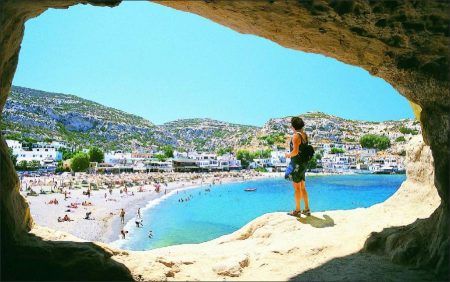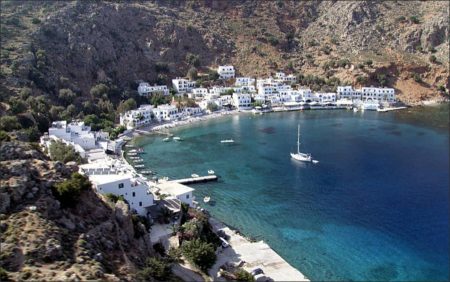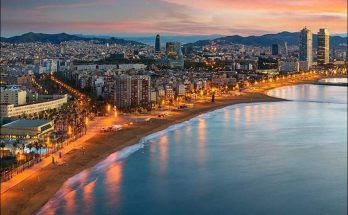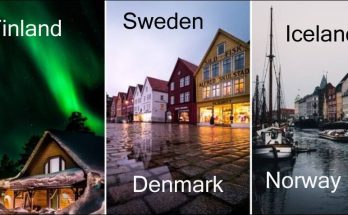How do you like your Greek gods? Fantastical heroes of ancient legend, or sun-kissed beauties atop powder-soft beaches? Either way, Crete has you covered.
Heraklion, the Cretan capital, was Europe’s fastest-growing tourism destination of 2017. Those visitors are coming to Greece’s largest, most diverse island to enjoy 3,000 square miles of mountains, valleys and sandy shores lapped by the Aegean and Libyan seas — as well as 3,000 hours of sunshine a year.
For history buffs, there are the archaeological treasures left by the Minoans, Europe’s oldest civilization, who flourished here in 2,600 BCE. Heraklion’s Archaeological Museum is a useful primer before visiting the sprawling Palace of Knossos, once home to 100,000 people and the mythical half-man half-bull Minotaur.
Western Crete has the Venetian splendor of Chania and Rethymno, while the skyline is dominated by the limestone peaks of the Lefka Ori, or White Mountains. The mountains are slashed with around 30 gorges, the most famous of which is the 16-kilometer-long Samaria Gorge.
Crete enjoys balmy temperatures April through October and is ringed with a host of impressive beaches. Diving trips in the clear, warm waters allow guests to view underwater canyons, World War II wrecks and a rich variety of marine life. The most celebrated beach is Elafonisi on the southwest coast, renowned for its delicately hued pink coral sand.
Don’t miss: Heraklion restaurant Peskesi serves prehistoric recipes from Minoan times. Pork roasted with honey and thyme never gets old.
Crete (Greek: Κρήτη, Kríti [‘kriti]; Ancient Greek: Κρήτη, Krḗtē) is the largest and most populous of the Greek islands, the 88th largest island in the world and the fifth largest island in the Mediterranean Sea, after Sicily, Sardinia, Cyprus, and Corsica. Crete and a number of surrounding islands and islets constitute the region of Crete (Greek: Περιφέρεια Κρήτης), one of the 13 top-level administrative units of Greece. The capital and the largest city is Heraklion. As of 2011, the region had a population of 623,065.
Crete forms a significant part of the economy and cultural heritage of Greece, while retaining its own local cultural traits (such as its own poetry and music). It was once the centre of the Minoan civilisation (c. 2700–1420 BC), which is the earliest known civilisation in Europe. The palace of Knossos lies in Crete.
The island is first referred to as Kaptara in texts from the Syrian city of Mari dating from the 18th century BC,[2] repeated later in Neo-Assyrian records and the Bible (Caphtor). It was also known in ancient Egyptian as Keftiu, strongly suggesting a similar Minoan name for the island.
The current name of Crete is thought to be first attested in Mycenaean Greek texts written in Linear B, through the words ke-re-te (*Krētes; later Greek: Κρῆτες, plural of Κρής), ke-re-si-jo (*Krēsijos; later Greek: Κρήσιος), “Cretan”. In Ancient Greek, the name Crete (Κρήτη) first appears in Homer’s Odyssey. Its etymology is unknown. One proposal derives it from a hypothetical Luvian word *kursatta (cf. kursawar “island”, kursattar “cutting, sliver”).[9] In Latin, it became Creta.
The original Arabic name of Crete was Iqrīṭiš (Arabic: اقريطش < (της) Κρήτης), but after the Emirate of Crete's establishment of its new capital at ربض الخندق Rabḍ al-Ḫandaq (modern Iraklion), both the city and the island became known as Χάνδαξ (Khandhax) or Χάνδακας (Khandhakas), which gave Latin and Venetian Candia, from which were derived French Candie and English Candy or Candia. Under Ottoman rule, in Ottoman Turkish, Crete was called Girit (كريت). This name is also have been using in today's Turkish Republic.
Visits: 108




